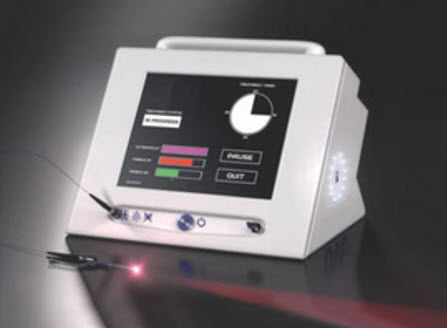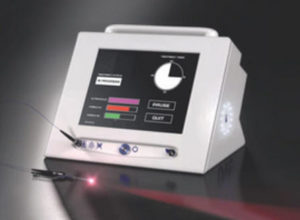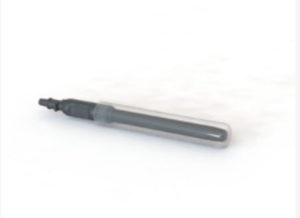NatureMed Launches Light Therapy Energy Station

We have a new service that we are extremely excited about. Some of you may have heard of ultraviolet blood irradiation (UVB) for killing bacteria and viruses, or the use of lasers over injuries for healing. Different types of light therapy include infrared red light such as that used in saunas, a low-level laser which is applied externally for injuries, and light therapy for use in the winter for depression.
Now, we have a device that provides Photobiomodulation* (PBM) and can deliver a variety of different wavelengths throughout the entire circulation of the body. This device is called a Photonx Energy Station. This is the latest technology for delivering different wavelengths of light directly to the bloodstream. The light is delivered under the tongue to the vascular bed, and comparative studies demonstrate this is the best method; better than intravenous or merely delivering the light over the skin.
A crazy thing about light therapy is how many names it has. The currently preferred name is Photobiomodulation but that’s a pretty scientific and difficult name. We at NatureMed like to call it light therapy. Other common terms that mean the same thing are: red light therapy, cold laser therapy, nonthermal LED light, and low-level laser therapy. Pretty confusing right?
Many of you may have heard of a cold laser being used to treat injuries. The red light penetrates into the affected tissue, such as a tendon, and has been shown to improve healing and reduce inflammation. The effectiveness depends on the wavelength but also on the power of the machine. Less advertised but well studied, are the effects of the light directly on the blood. When the blood is treated systemic inflammation is reduced, viruses are killed, the immune system is activated and metabolic pathways are stimulated.
NatureMed Recommends Photobiomodulation for:
- Fatigue
- Exercise performance and recovery
- Improvement of immune function
- Chronic pain
- Postsurgical healing
The Photonx Energy Station
The photonx station generates the light energy and manages the treatment process. It contains an exclusive, patented optic engine that employs a cutting-edge mirror matrix to capture the light sources and direct it into the output port for delivery to the patient applicator.
Photonx Monotube Sublingual Applicator
The Photonx Monotube Sublingual Applicator delivers multiple photonic wavelengths into the vascular bed of the sublingual region.
Photobiomodulation Background
The science of Photobiomodulation (PBM) involves using light at wavelengths between 411 to 1100 nm to mainly influence inflammation, reduce pain, and promote healing. In 2008, the Russian scientist Tiina Karu was the first to elucidate the key mechanism for PBM. She identified the ability of low-level light therapy to affect cytochrome C oxidase in the respiratory chain responsible for generating ATP as the primary action. She also introduced the concept of retrograde mitochondrial signaling that explains how relatively brief exposure to light can affect cellular biology for many days after exposure.
Prior to being called PBM, it was called low level light therapy (LLLT), as well as just laser therapy. In the past only red wavelengths were used but now recent data supports other wavelengths as well.
The experimental use of PBM was first reported by Endre Mester in 1967 at Semmelweiss University, Budapest. After shaving the backs of mice and applying red light it was found that the hair grew back faster than the mice that did not receive the light therapy.
How Photobiomodulation Works
PBM works mainly by affecting ATP production in the electron transport chain within mitochondria, reducing reactive oxygen species which promote inflammation, and controlling inflammation molecules made by the immune system. Light therapy is being used in both animal and human studies to reduce side effects of chemotherapy and radiation, improve healing post-surgically, treat neuro inflammation, reduce pain, and improve muscle performance in humans. In total, at least 6,000 papers have been published regarding the application of bio modulation for the above conditions. Out of the randomized trials, 620 have been on humans.
According to the Grotthuss–Draper law, commonly termed “the First Law of Photochemistry”, photochemical reactions are dependent on the absorption of light by a system.
PBM treatment consists of a sublingual delivery of various exact wavelengths of light and takes 40 minutes. The vascular system under the tongue delivers significant blood flow and all the blood in the body can be treated in 40 minutes. However, the different actions in the body are quite varied depending on the wavelength. Because this is a sublingual delivery device affecting blood only, rather than a topical use, it affects the immune system and red blood cells. These cells are affected by the above mechanisms of a blue light, with the exception of effects on the retina, and direct effects on tissue such as tendons and hair growth.
Learn more about PBM including how it works in the body, and the effect of different wavelengths: Light Therapy (Photobiomodulation)
*Serrage, H., , Heiskanen, V., , Palin, W. M., , Cooper, P. R., , Milward, M. R., , Hadis, M., , & Hamblin, M. R., (2019). Under the spotlight: mechanisms of photobiomodulation concentrating on blue and green light. Photochemical & photobiological sciences : Official journal of the European Photochemistry Association and the European Society for Photobiology, 18(8), 1877–1909.



